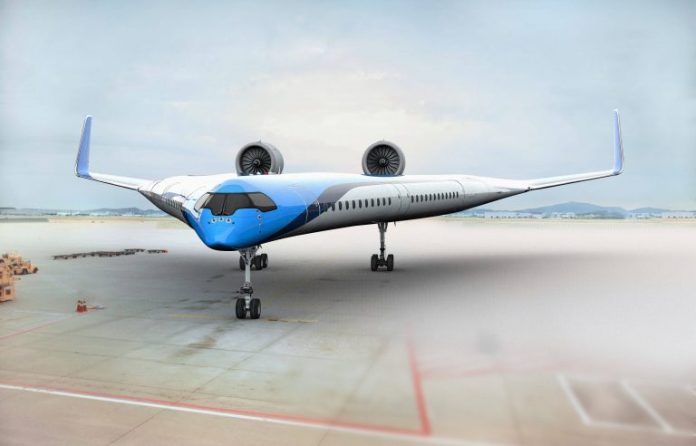
KLM Royal Dutch Airlines has always been a brand passionate about sustainability within the aviation industry and continues to break barriers when it comes to innovative ideas on how to create a greener environment for all. However, their brand-new Flying-V is certainly a game-changer.
The Flying-V is a design for a highly energy-efficient long-distance aeroplane. The aircraft’s design integrates the passenger cabin, the cargo hold and the fuel tanks in the wings, creating a spectacular v-shape. Its improved aerodynamic shape and reduced weight will mean it uses 20% less fuel than the Airbus A350, today’s most advanced aircraft.
In the Flying-V – originally an idea of TU Berlin student Justus Benad during his thesis project at Airbus Hamburg – the passenger cabin, cargo hold and fuel tanks are integrated in its wing structure. The design is not as long as an Airbus A350, but it has the same wing span. This allows the Flying-V to use the present infrastructure at airports, such as gates and runways. It even fits in the same hangar as an A350. The Flying-V carries about the same number of passengers – 314 in the standard configuration – and the same amount of cargo, 160 m3. Project leader at TU Delft, Dr. Roelof Vos: “The Flying-V is smaller than the A350 and has less inflow surface area compared to the available amount of volume. The result is less resistance. That means the Flying-V needs less fuel for the same distance.”
Flying prototype
In October 2019, the same month the KLM brand celebrates its 100th birthday, researchers will present a flying prototype that will be used to test whether the Flying-V can remain stable and reliable while being flown at low speeds – during take-off and landing.
Improved passenger experience
The Flying-V also provides researchers a unique opportunity to improve passenger experience in aircrafts, from the seating lay-out in the wings, to the design of the chairs and bathrooms. Everything has to also be as light as possible, in order to maximise the efficiency, gain the new airplane shape provides. Peter Vink, Professor of Applied Ergonomics and Design at the Faculty of Industrial Design Engineering, is taking part in the project; “The new shape of the aircraft means we have exciting opportunities to design the interior, making flying more comfortable for passengers. For instance, as part of the Flying-V research, we’re looking into new options to having a rest or taking meals on a plane. Offering food from a buffet is one of the options we’re sinking our teeth in.”
Sustainable aviation
Global aviation is responsible for about 2.5% of total CO2 emissions. This percentage is set to increase rapidly as the number of kilometres passengers travel each year is growing at about 4.5 to 5% per year – we’re flying increasingly often and increasingly far. This was why, in October 2018, the Dutch aviation sector presented an action plan to Minister Cora van Nieuwenhuizen of Infrastructure and Water Management on making air travel more sustainable. Twenty transport organisations and knowledge institutions joined forces on the ‘Smart and Sustainable’ plan aimed at speeding up existing developments for making aviation more sustainable. The aim is to decrease Dutch aviation’s CO2 emissions by 35% by the end of 2030.
Flying-V Fun Facts:
Length: 55 Meters
Wing Span: 65 Meters
Height: 17 Meters
Number of passengers: 314
Feul: 140.000 litres of kerosene
Cargo: 160 m³
Fuel efficiency (compared to Airbus A350-900): 20% less fuel
For more information about KLM and flights available, call 0860 247 747, email: [email protected], or visit their website at www.klm.co.za.











